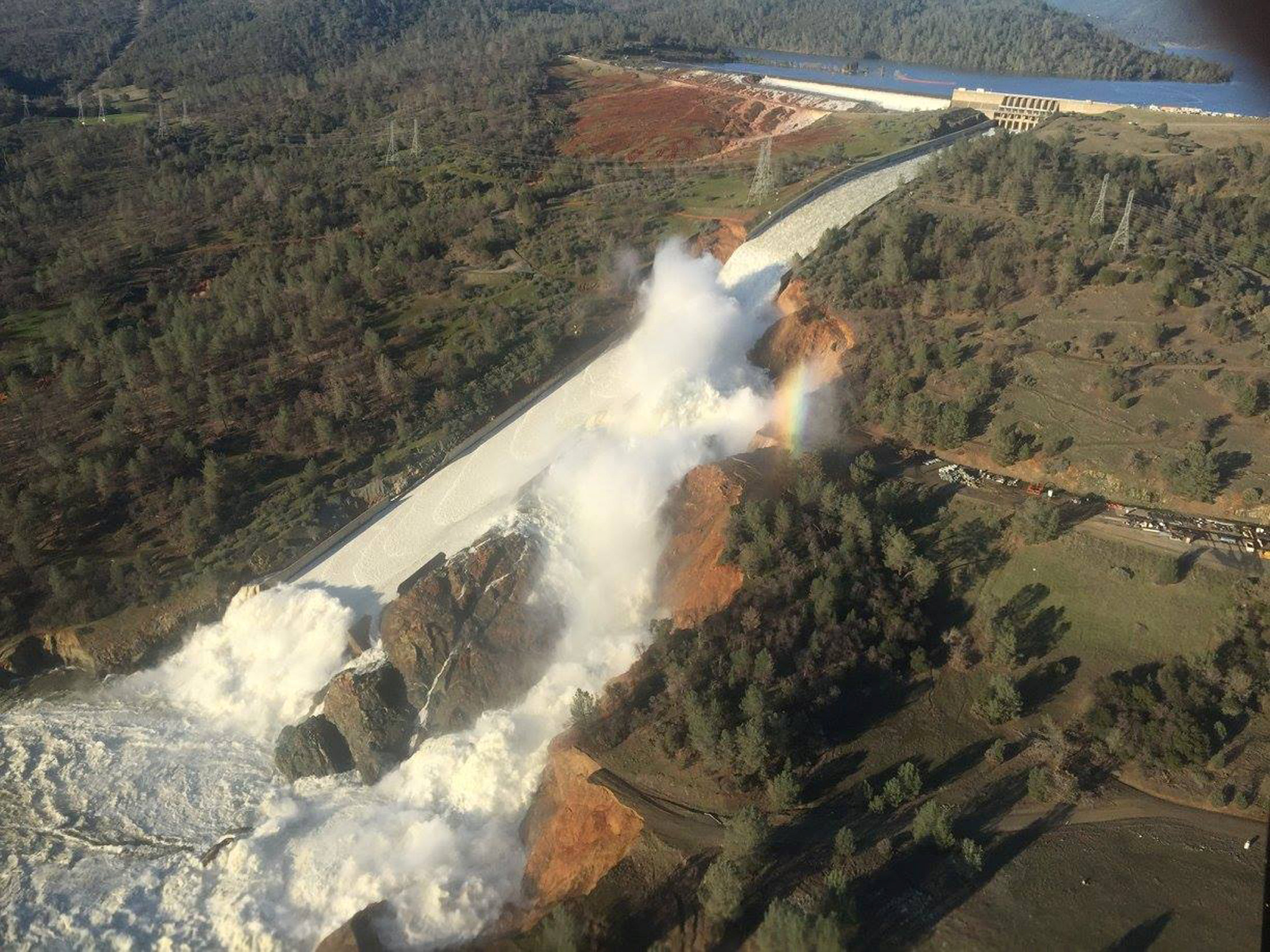
By Deborah M. Todd and Sharon Bernstein
OROVILLE, Calif. (Reuters) – Tens of thousands of Californians faced an indefinite stay in shelters as engineers worked for a second day on Tuesday to fix the United States’ tallest dam before more storms sweep the region.
After what looks set to be the wettest winter in Northern California following years of drought, more rain was forecast for as early as Wednesday and through Sunday, according to the National Weather Service.
Crews were working to shore up an overflow channel and drain the reservoir at the Lake Oroville Dam but authorities gave no indication of when it would be safe for people to go home.
Late on Sunday, about 188,000 residents were ordered to evacuate their homes in the Feather River valley below the dam, 65 miles (105 km) north of Sacramento.
Authorities say they had averted the immediate danger of a catastrophic failure at the dam that could unleash a wall of water three stories tall on towns below.
“We’re doing everything we can to get this dam in shape that they can return and they can live safely without fear. It’s very difficult,” California Governor Jerry Brown told reporters during a news conference on Monday evening.
On Monday, Brown sent a letter to U.S. President Donald Trump asking him to issue an emergency declaration, which would open up federal assistance for the affected communities, after an emergency overflow channel appeared on the brink of collapse.
Yolanda Davila, 62, of Thermalito, ended up at the Silver Dollar Fairgrounds in Chico, one of only five in the area taking people with pets. She left home without medicine and dog food in the rush to find shelter before the evacuation deadline.
She said that areas such as Sacramento had been issued flood warnings earlier in the week and that authorities should have warned residents near Oroville much sooner.
“We didn’t have a plan, all we knew is to head north toward Chico,” Davila said. “If I knew we had to get out earlier I would have went to the Bay Area.”
The earth-filled dam is just upstream and east of Oroville, a town of about 16,000 people. At 770 feet (230 meters) high, the structure, built between 1962 and 1968, it is more than 40 feet taller than the Hoover Dam.
On Monday afternoon, crews dropped large bags filled with rocks into a gap at the top of the emergency spillway to rebuild the eroded hillside.
The main spillway, a separate channel, is also damaged because part of its concrete lining fell apart last week. Both spillways are to the side of the dam itself, which has not been compromised, engineers said.
(Additional reporting by Brendan O’Brien in Milwaukee; Editing by Louise Ireland)








